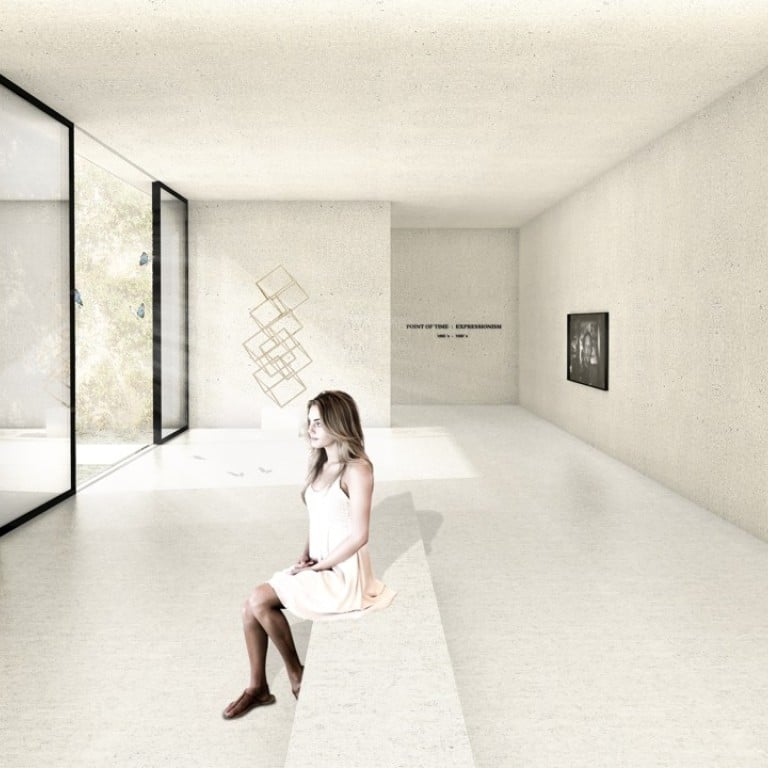Is art best seen underground? This HK$77.3 million gallery says yes

Dost Architecture’s Plug & Play Art Gallery offers intimacy and energy saving
The stars in an art gallery are undoubtedly the artworks themselves, but the ergonomics and interior planning of the gallery is also of paramount importance.
Dost Architecture’s founder Dominic Meister and head of interior design Julian Tschanen worked with STYLE on an innovative, hypothetical design for a private art gallery. To the duo, the environment plays a crucial role in art appreciation.
“Here [in this] private exhibition space, an exclusive and relaxed atmosphere is intended for the collector,” Meister says. Rather than targeting the wider audience as in public museum projects, this private art gallery design puts much focus on privacy.
To let visitors “enjoy art intimately”, the duo moved the exhibition room below ground level.
“This simple, yet bold, act emphasises the importance of the art by excluding the adjacent environment,” Meister explains.

Without interference from the surroundings, plus the use of reduced geometric forms and timeless materials in the space, the artworks take centre stage. “In this atmosphere, the art is allowed to unfold itself, free from external influences, to engage the observer,” Meister says.
The design is divided into two parts – an indoor gallery and an outdoor courtyard. Like an outer ring, the indoor space encircles the centre courtyard and connects with it through four glass doors. When the doors are closed, the gallery becomes a path along which the artworks are chronologically arranged.
When the doors are open, visitors are escorted to an open-air sculpture park, which is “an area of water and is delimited by the walls and windows from the exhibition rooms”, Meister says. As a perfect backdrop, “the water surface reflects the external influences and creates a floating calm” for the visitors to literally dabble in art.
By carefully placing large stone blocks on water as footsteps, four display areas are created to showcase artworks of different subject matters. Visitors can follow each of the paths to enjoy a different experience. According to the duo, the stone paths choreograph the visitor’s experience and allow the collector to present his works of art in various ways.